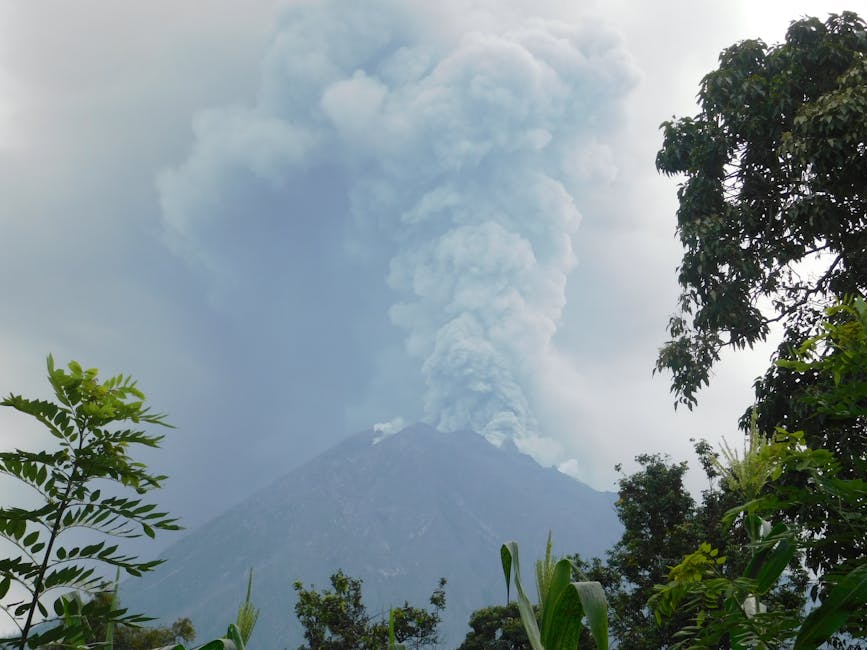Ethiopia Volcanic Eruption: Live Updates
New Delhi: In a rare and dramatic atmospheric event, a massive plume of volcanic ash from the powerful Alayta volcanic eruption in Ethiopia has travelled thousands of kilometres to reach North India. The ash cloud is now casting a hazy pall over the Delhi-National Capital Region (NCR), causing significant disruption to flight operations at Indira Gandhi International Airport (IGI).
This developing situation is being closely monitored, and these Ethiopia volcanic eruption live updates will cover the latest on flight impacts, health advisories, and meteorological forecasts.
Volcanic Ash Grounds Flights: Major Disruption at Delhi’s IGI Airport
The primary and most immediate impact of the ash plume reaching Delhi has been on air travel. The Directorate General of Civil Aviation (DGCA) issued an urgent advisory this morning, as the fine particulate matter from the volcano poses a critical threat to aircraft engines, potentially leading to mid-flight failure.
IGI Airport, one of the region’s busiest aviation hubs, is currently facing severe operational challenges. An airport official confirmed the scale of the disruption:
“As of 10 AM, we have seen over 40 domestic departures delayed and 12 outright cancellations. International flights, especially those on westward routes, are being rerouted to avoid the densest parts of the Ethiopian volcanic ash cloud. Passenger safety is our paramount concern, and we are working continuously with the IMD and DGCA.”
Airlines including IndiGo, Vistara, and Air India have urged passengers to check their flight status before travelling to the airport. Social media is flooded with images from frustrated passengers showing crowded terminals and the unusual grey haze visible from airport windows.
How Did the Ethiopia Volcano‘s Ash Cloud Travel to India?
The phenomenon of volcanic ash travelling from Africa to India is explained by a combination of a powerful eruption and specific atmospheric conditions. According to the India Meteorological Department (IMD), the Alayta eruption was so forceful that it blasted the ash cloud to an extremely high altitude, into the subtropical jet stream.
An IMD scientist explained the process: “These high-velocity jet streams acted like an atmospheric highway, transporting the plume eastward across the Arabian Sea and over India in less than two days. The plume is situated at 30,000-40,000 feet—the cruising altitude for most commercial aircraft—which is why flight ops are so severely impacted.”
Delhi Air Quality Worsens: Health Advisory Issued for Volcanic Ash
Beyond the aviation crisis, health officials have issued a public advisory due to the potential impact on the NCR’s air quality. Volcanic ash consists of sharp, abrasive particles of rock and glass, which can cause significant respiratory issues.
“This is more dangerous than typical smog,” warned Dr. Ritesh Mehra, a senior pulmonologist. “These silicate particles can cause eye irritation, coughing, and acute breathing difficulties. We strongly advise vulnerable groups—children, the elderly, and those with asthma—to remain indoors. If you must go outside, an N95 mask is essential.”
Live Updates: Tracking the Ash Plume and What to Expect
The duration of the disruption depends on the Alayta volcano’s activity and prevailing wind patterns. The IMD is using satellite imagery and atmospheric models to provide live tracking of the plume’s density and movement. Current forecasts indicate the plume of ash over Delhi may persist for another 24-36 hours before it begins to disperse.
For now, Delhi remains under a surreal, hazy sky—a stark reminder of our planet’s interconnectedness, where a geological event on one continent can disrupt life in another.
Stay tuned for more live updates on the Ethiopia volcanic eruption and its impact on India.




